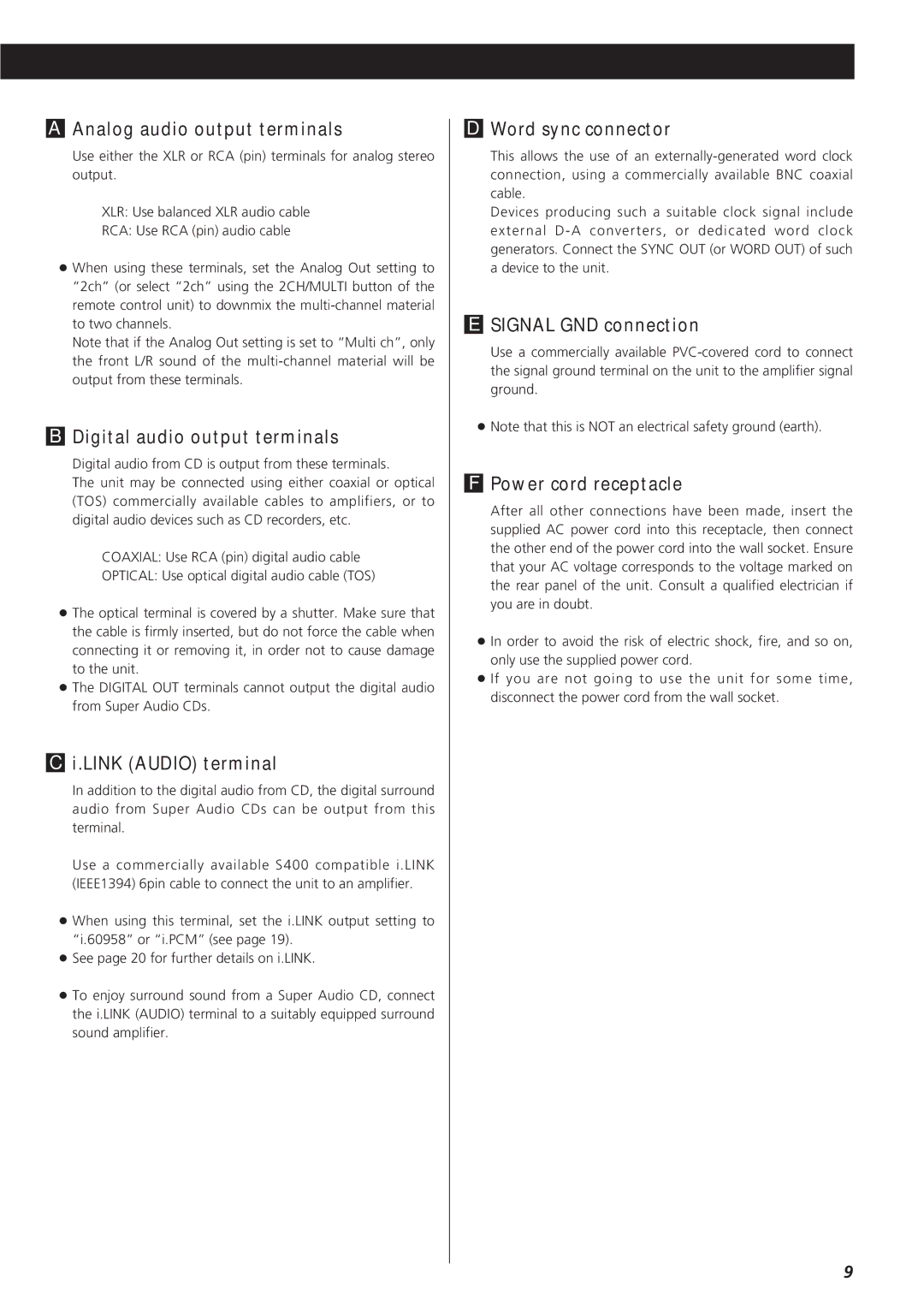X-03SE, X-03 specifications
The Teac X-03 and X-03SE represent a significant evolution in high-fidelity audio playback, catering to enthusiasts who demand the utmost in sound quality and versatility. These models showcase Teac's commitment to excellence, featuring both innovative design and advanced technology.At the heart of the X-03 and X-03SE lies their impressive digital-to-analog conversion capabilities. Equipped with premium AKM AK4490EQ DAC chips, these units deliver remarkable audio performance, ensuring that every note and nuance of your favorite music is rendered with crystal clarity and dynamic range. The X-03SE model further enhances this performance with improved component selections and enhanced circuitry, resulting in even greater audio fidelity.
One of the standout features of both the X-03 and X-03SE is their support for a wide array of audio formats. Users can enjoy high-resolution audio playback, with capabilities for DSD files and PCM resolutions up to 32-bit/768kHz. This flexibility allows audiophiles to fully engage with their digital music libraries, ensuring compatibility with modern and legacy formats alike.
The build quality of the X-03 and X-03SE is exemplary, featuring robust chassis designs that minimize external vibrations and interference. Their aesthetically pleasing design includes a user-friendly front panel with a high-contrast display, which provides essential information at a glance. The remote control enhances user experience by granting easy access to all functions from a distance.
Connectivity options are comprehensive, making integration into existing audio systems seamless. The rear panel includes both balanced XLR and unbalanced RCA outputs, as well as digital inputs like USB, coaxial, and optical. This versatility allows the X-03 and X-03SE to serve as central hubs in high-end audio setups, accommodating a variety of source devices.
Advanced features such as a high-quality headphone amplifier and network capabilities further elevate the listening experience. Users can stream music directly from their devices, harnessing the power of modern technology without sacrificing audio quality.
In conclusion, the Teac X-03 and X-03SE are designed for discerning listeners who appreciate the fusion of cutting-edge technology and timeless craftsmanship. With their exceptional sound quality, versatile formats, and robust connectivity options, these models are poised to satisfy even the most demanding audiophile. Whether for critical listening in a dedicated studio or relaxed enjoyment at home, the X-03 series stands as a testament to Teac's legacy in the world of high-fidelity audio.

